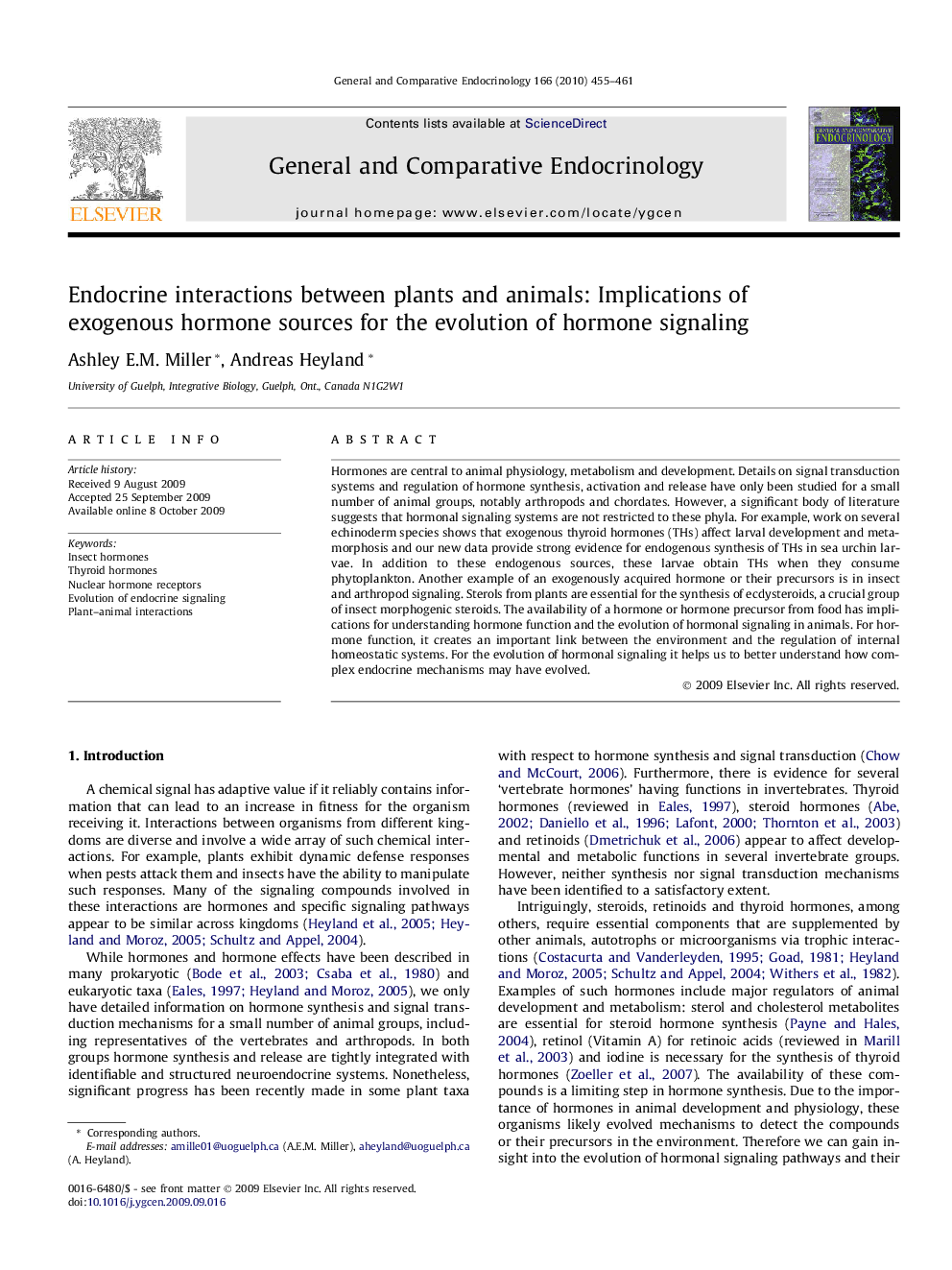| کد مقاله | کد نشریه | سال انتشار | مقاله انگلیسی | نسخه تمام متن |
|---|---|---|---|---|
| 2801086 | 1156142 | 2010 | 7 صفحه PDF | دانلود رایگان |

Hormones are central to animal physiology, metabolism and development. Details on signal transduction systems and regulation of hormone synthesis, activation and release have only been studied for a small number of animal groups, notably arthropods and chordates. However, a significant body of literature suggests that hormonal signaling systems are not restricted to these phyla. For example, work on several echinoderm species shows that exogenous thyroid hormones (THs) affect larval development and metamorphosis and our new data provide strong evidence for endogenous synthesis of THs in sea urchin larvae. In addition to these endogenous sources, these larvae obtain THs when they consume phytoplankton. Another example of an exogenously acquired hormone or their precursors is in insect and arthropod signaling. Sterols from plants are essential for the synthesis of ecdysteroids, a crucial group of insect morphogenic steroids. The availability of a hormone or hormone precursor from food has implications for understanding hormone function and the evolution of hormonal signaling in animals. For hormone function, it creates an important link between the environment and the regulation of internal homeostatic systems. For the evolution of hormonal signaling it helps us to better understand how complex endocrine mechanisms may have evolved.
Journal: General and Comparative Endocrinology - Volume 166, Issue 3, 1 May 2010, Pages 455–461